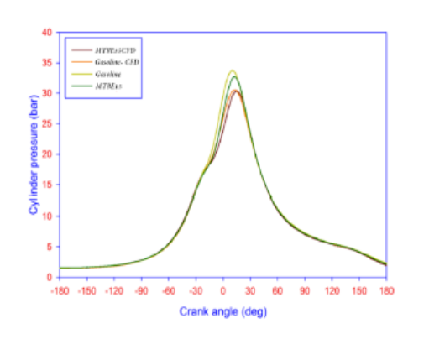


Indian Journal of Science and Technology
DOI: 10.17485/IJST/v15i44.1659
Year: 2022, Volume: 15, Issue: 44, Pages: 2422-2431
Original Article
D Dadapeer1*, E S Prakash2
1Research Scholar, Department of Mechanical Engineering, U.B.D.T College of Engineering, Davanagere, Karnataka, India
2Department of Mechanical Engineering, U.B.D.T College of Engineering, Davanagere, Karnataka, India
*Corresponding Author
Email: [email protected]
Received Date:11 August 2022, Accepted Date:28 September 2022, Published Date:02 November 2022
Background: Homogeneously charged compression ignition (HCCI) engines are generally popular for low production of NOx and Soot formation, also consuming lower fuel as compared with conventional gasoline and diesel engine. Objectives: In this study, the compression ignition engine (CI) was simulated in HCCI mode fuelled with Gasoline and Methyl tert-butyl ether (MTBE) blends, and the analysis was carried out in similar operating conditions as experimentation carried out. Methods: The chamber pressure was maintained at 2 bar, and the air-fuel ratio was maintained at2.75. The optimal blend for MTBE was fixed as 15 vol % (MTBE 15), and the measured properties of the blends were used in the simulation. ICE simulation module in ANSYS WORKBENCH was used for this current simulation. Both cold flow and combustion simulations were carried out and the results indicate velocity indie the cylinder, cylinder pressure, and temperature distributions for two cases such as gasoline and gasoline with MTBE15. Findings: The average velocity was found high with the MTBE blend, whereas in-cylinder pressure was found low with MTBE blend than with gasoline. The temperature inside the cylinder pressure was found higher with gasoline than MTBE blend. The deviation between the experimentation and simulation was found low. Novelty: The simulation provides a better understanding of the combustion phenomena when gasoline is mixed with MTBE and utilized in a diesel engine at HCCI mode.
Keywords: CFD; MTBE; Gasoline; HCCI; Emission reduction
© 2022 Dadapeer & Prakash. This is an open-access article distributed under the terms of the Creative Commons Attribution License, which permits unrestricted use, distribution, and reproduction in any medium, provided the original author and source are credited. Published By Indian Society for Education and Environment (iSee)
Subscribe now for latest articles and news.